There are a few places we visited in Lijiang, which worth to journal down. Today, I will focus on our first top in Lijiang - DongBaGu (东巴谷)
This is a cultural village in Lijiang, displaying some major tribes and their cultural activities. Unlike the Yunnan Cultural Village (云南民族村), they do not really have a schedule for performance. As and when tourists are grouped together and led by their tour guide, when the group arrives at any tribal village, they would perform.
They also display some of the Yunnan 18 Peculiarities (云南十八怪), which were explained in their cultures.
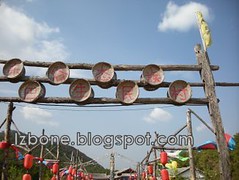
Entrance to the cultural village.
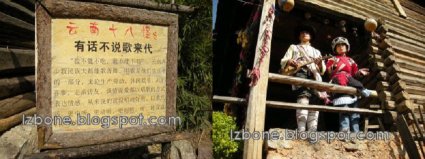
Here is one of the 18 peculiarities – They sing more than they speak. As we read that, we entered into Lisu tribe’s village, and we were welcomed by this couple, who sang us a Welcome Song (video).
Apparently, in Lisu tribe, they believe in relieving evil/ghosts from pains. So, in some sacred activities, they climb knife ladder like this:
The ladder was really made of sharp knifes!
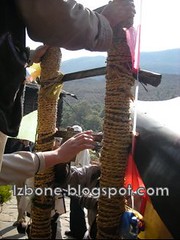
In the same Lisu tribe, they also have a ritual to chase away ghosts (ghost-buster?). In the performance, this old lady actually burned the steel till it was red hot and she actually licked the hot steel.
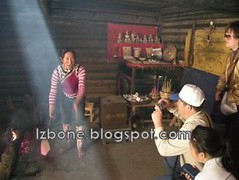
I think it was just too painful to watch. A tourist voiced that out to the guide, pleading them to stop this, which I think is a brave action! And I think he was doing the right thing!
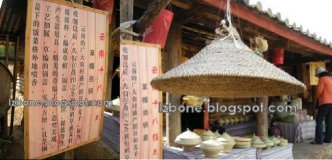
Here is another peculiarity in Yunnan. Their wok cover is made of straw hats! Look at the smaller pots in the lower right of the picture above, they are all covered with straw hats.
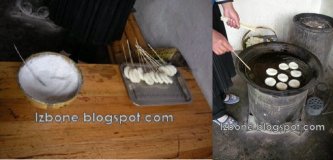
Here are some fried rice cakes, which they fried on the spot and selling for RMB1 per stick. Delicious!
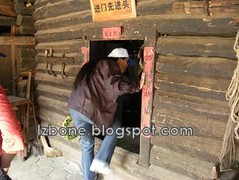
In some tribes, their doors are very small and low. This is to pay respect to the people staying in the room – you have to dip/lower your head as you enter the room!
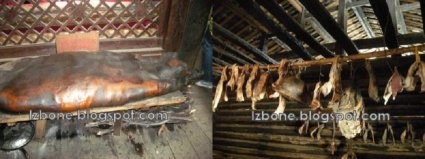
In the old days, they do not have fridges, so the best way to preserve meat is to air dry the meat. In the pic above, the pig (left) is already mummified, and was already 8 years old! The ones hanging at the ceiling are dried pork and their jaws. Can’t imagine how they would use them. In fact, later on when we went to some restaurants, we also saw these air dried meats in their kitchen and storage area – really wonder if those are the meat they served us. :p

There are just so many snacks available. We bought a few others in DongBaGu. But nothing beat the rice cake mentioned above.
I have to admit one of the most unique culture I observed in Naxi Tribe is their environmental awareness and practice. Their religion teaches them to love and respect the environment, to observe ecology balance and not to destroy the nature. There was a section in the cultural village that exhibits things that help create the awareness.
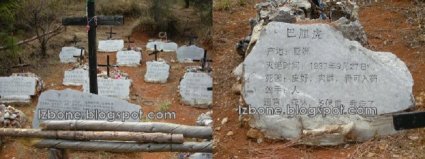
In the pic above, they have a graveyard for extinct animals, with reasons of extinct and the animals last words. The writings are quite critical. Take the right one as an example, what was written are:
巴厘虎
产地: 亚洲
灭绝时间: 1937年 9月 27日
死因: 皮好, 肉鲜, 骨可入药
凶手: 人
遗言: 森林, 多保重, 我走了
(Bali Tiger
Geography: Asian
Extinction date: 27 Sep 1937
Cause of death: Good skin, delicious meat, bone has medical benefit
Killer: Human
Last words: Forest, take car, I’m leaving)
Related Topics
Overview of My Lijiang Trip
China Lijiang Trip Itinerary – useful for people planning to visit






No comments:
Post a Comment